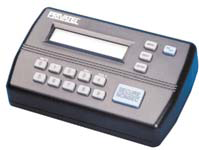VoIP security issues
There has, of late, been a rash of (justified) concern about the security of VOIP communications. Indeed, on 24 October 2005 the Voice over IP Security and Privacy Alliance published their Threat Taxonomy (http://www.voipsa.org/Activities/taxonomy.php).
The Threat Taxonomy starts with a good definition of terms, so you can understand VoIP discussions, then goes extensively into the threats to security that are faced. These threats are, of course, real. On the other hand, the technology is new, and we can have some confidence that it will mature with the passage of time.
This lack of maturity causes those of us who use VoIP lines to have some concerns outside the realm of the security of the technology. For us, the primary concern is that this not-quite-ready-for-prime-time technology means that we have too many calls that need to be re-made for some technical reason, often including the fact that they sound like a scratchy 78 rpm record your grandfather bought in the 1920s, and which has made its way through the family and into your collection.
 We are not, however, particularly concerned with VoIP eavesdropping issues. This is because we are always concerned about eavesdropping, whether on a copper wire system, a VoIP system, or a satellite system. And on each of these we carry on important conversations only when they are encrypted. We use our Privatel (http://www.l- 3com.com/cs-east/ia/privatel/ie_ia_privatel.shtml) voice encryptor on regular landlines. We use our Privatel on VoIP lines (where the packet errors rather annoyingly force us out of secure mode every few minutes, making us push the button again). We use our Privatel on our satellite phone, thus explaining, for those who wondered, why we often a heavier Inmarsat terminal rather than a lighter handheld.
We are not, however, particularly concerned with VoIP eavesdropping issues. This is because we are always concerned about eavesdropping, whether on a copper wire system, a VoIP system, or a satellite system. And on each of these we carry on important conversations only when they are encrypted. We use our Privatel (http://www.l- 3com.com/cs-east/ia/privatel/ie_ia_privatel.shtml) voice encryptor on regular landlines. We use our Privatel on VoIP lines (where the packet errors rather annoyingly force us out of secure mode every few minutes, making us push the button again). We use our Privatel on our satellite phone, thus explaining, for those who wondered, why we often a heavier Inmarsat terminal rather than a lighter handheld.
If you encrypt, you won’t be concerned, either.

